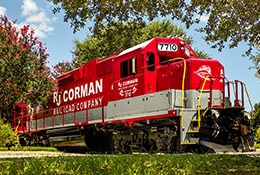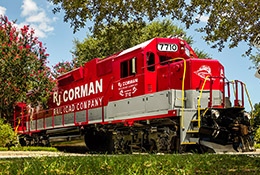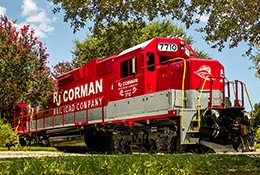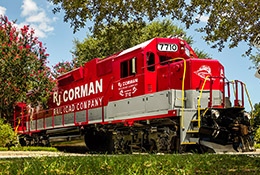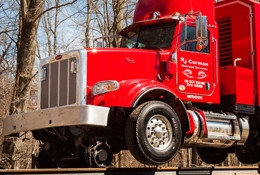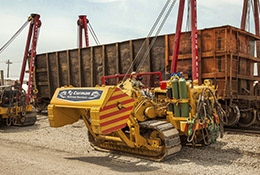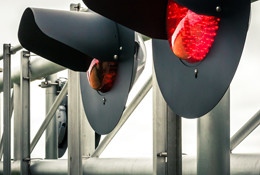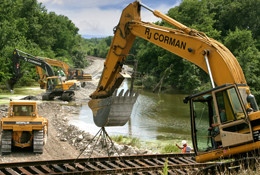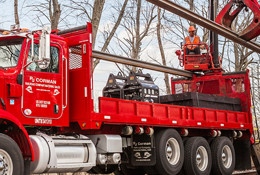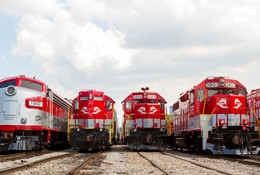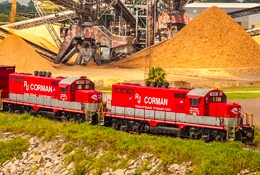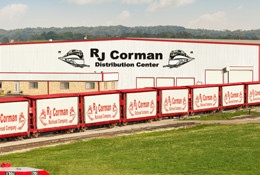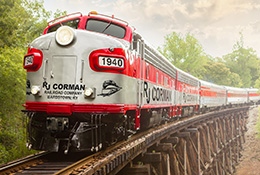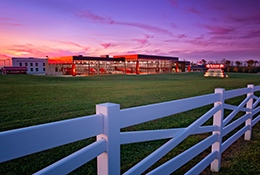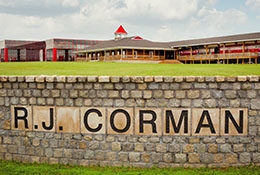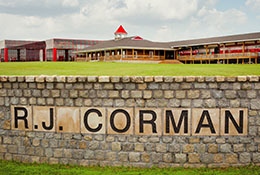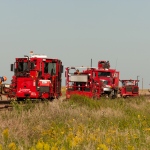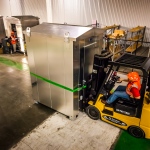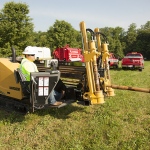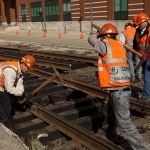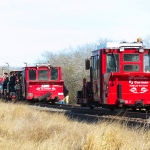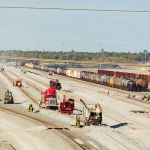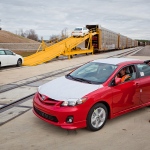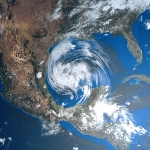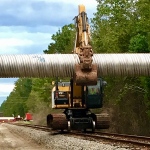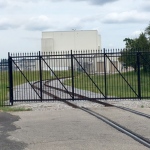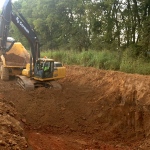R. J. Corman Railroad Services’ construction team provided two rail gangs and a tie gang, totaling over 100 employees, to help Canadian National (CN) complete a rehab project in Wisconsin. R. J. Corman employees joined forces with CN to complete the project within a six-week window.
In December 2017, R. J. Corman Signaling shipped out the first round of PTC houses for Canadian National (CN). CN hired R. J. Corman to assist with new PTC subdivision upgrades because of R. J. Corman’s capacity to support flexible due dates, along with competitive pricing and proven high quality of service.
As the PTC mandate approached its end-of-2018 deadline, railroads began looking for companies who could complete large scale construction on tight deadlines. Norfolk Southern awarded R. J. Corman Signaling with the job of upgrading or fully installing PTC in 37 locations. The job began in November of 2017 in Montgomery, Alabama and was concluded at the end of April 2018 in Mobile.
The R. J. Corman Switching Company provides switching services for industries that ship via rail, which generally involves a work force and locomotives placed within a customer facility. The company is also equipped to inspect and maintain customer rail yards and tracks, as well as supply and build new service tracks. On April 20th, 2018, during a quarterly track inspection done by R. J. Corman, a concern arose that required the company to complete emergency track maintenance services for the switching customer.
R. J. Corman Railroad Services was awarded a job as the primary contractor for a rail relay job for Kansas City Southern in Oilton, Texas. They were tasked with relaying approximately 76,000 lineal feet of rail, and welding it across the Laredo Subdivision. The job began on January 9th, and ended on February 16th in Robstown, Texas. The goal was to get the job completed by February 27th, but the R. J. Corman Railroad Services’ crew was able to complete the job 11 days early.
Starting in June of 2016, R. J. Corman Railroad Services began construction of a new classification yard, and the expansion of the existing yard, for Kansas City Southern in the Sasol Chemical facility in Westlake, Louisiana. In total, 35 miles of new track, 132 turnouts and 136 switches were constructed. A team of 150 R. J. Corman Railroad Services employees worked for 18 months to complete the project.
R. J. Corman Signaling has met the demands placed on the railroads by providing PTC installation and support to several Class I and short line railroads in 2016 and 2017. Over 60,000 miles of rail network needed to be developed, installed and the technology tested to make rail transportation even safer than it already was by automatically stopping a train before accidents occur. Positive Train Control (PTC) became required in 2008 when Congress passed a mandate requiring privately owned railroads to have the technology installed by 2018.
The R. J. Corman Railroad Switching Company has provided switching services as well as shuttle and railcar loading for Toyota Motor Manufacturing MS in Blue Springs, MS since 2011. Their operations are focused on loading and unloading large groups of cars and fulfilling unique customer requirements. For Toyota Blue Springs, they get involved immediately after production by taking the vehicles right off the production line to the trucks or railcars and loading the vehicles for transportation. Over 600 cars were handled by R. J. Corman, daily in 2018.
In August 2017, out of the Atlantic Ocean, Hurricane Harvey formed and made its way toward the United States coast. As a Category 4 storm, Harvey hit Texas and Louisiana on August 25th and began pouring down torrential amounts of rain on the states. Some areas hit by the storm got up to 40 inches of rain, and a 1-in-1,000-year flood submerged 30% of the City of Houston and nearby towns. Between the winds, rain and flooding, Hurricane Harvey left a wake of destruction in Texas from Corpus Christi to Beaumont.
Hurricane Irma struck the Florida Coast on September 10 before degrading into a remnant low over Alabama and subsequently dissipating on September 13 over Missouri. During that time, large amounts of rain fell across the state of Georgia as well. In Jesup, severe flooding caused a culvert to fail at the primary rail interchange at Rayonier Advanced Material which is served by R. J. Corman Switching Company. Eighty-five percent of the mill’s revenue flows through this interchange point, and the customer was concerned about delayed rail cars and shipments.
For nine years, R. J. Corman Railroad Company served the J.M. Smucker jelly plant on their Tennessee Terminal, but the plant slowly began to decrease the production of its fruit spreads. Smucker’s announced in 2010 the plan to close the jelly plant in Memphis, Tennessee by the summer of 2013, and instead, was going to invest more into the facility in Orrville, Ohio, where the company is based. However, in early 2013, Smucker’s representatives from Ohio contacted R. J. Corman to gain insight on a potential peanut butter plant site. Immediately we showed them the rail line that was serving the jelly plant in Memphis, Tennessee.
Hankook Tire built their first manufacturing facility in the United States in Clarksville, Tennessee. The company has 8 locations worldwide, but decided when they built the Tennessee facility to start receiving their material by rail for the first time. R. J. Corman Railroad Company began construction on a rail spur in March of 2015, building track on the inside of the facility and out to their Memphis Line.

